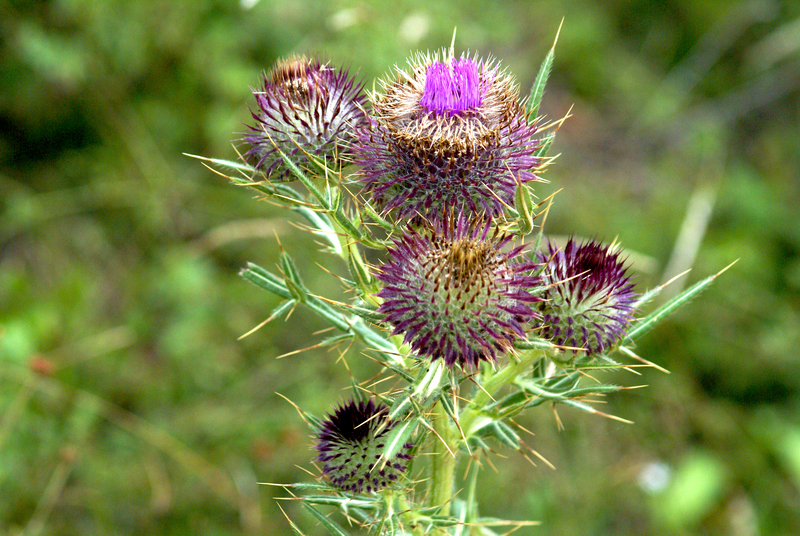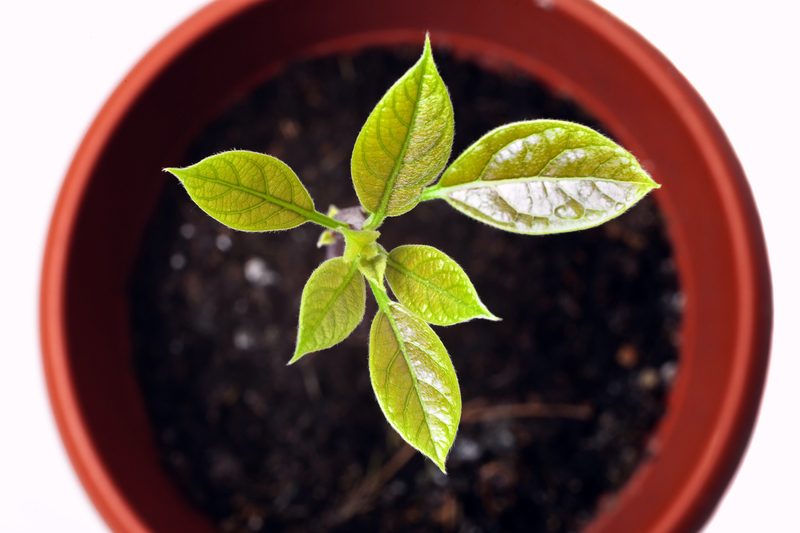The Ultimate Handbook to Orchid Maintenance
Posted on 29/05/2025
The Ultimate Handbook to Orchid Maintenance
Orchids are among the most beloved flowering plants, prized for their unusual beauty, incredible variety, and long-lasting blooms. However, for many enthusiasts, caring for orchids can seem intimidating or confusing. This comprehensive guide will take the mystery out of orchid maintenance, offering clear, practical tips and insider knowledge to help both beginners and seasoned gardeners alike. Whether you're nurturing a single phalaenopsis on a kitchen windowsill or managing a lush orchid collection in a greenhouse, this handbook covers everything you need for success.
Understanding Orchids: An Introduction
There are over 25,000 species of orchids worldwide, with varieties found in nearly every climate--from tropical jungles to temperate meadows. While shapes, sizes, and bloom times vary widely, the fundamental principles of orchid care and orchid maintenance remain consistent for most commonly grown varieties.
Popular Orchid Types for Home Gardeners
- Phalaenopsis (Moth Orchid): Known for their forgiving nature and long-lasting flowers, making them perfect for beginners.
- Cattleya: Famous for their showy, fragrant blossoms and vibrant colors.
- Dendrobium: Renowned for their variety and elegant appearance.
- Oncidium: Blessed with profuse, delicate sprays of flowers.
- Vanda: Loved for their striking aerial roots and intense hues.

Essential Components of Orchid Maintenance
While each species has its quirks, mastering the following elements will vastly improve your success with orchid care:
1. Light Requirements
Orchids are sensitive to light, but there's a delicate balance: too much sun will scorch their leaves, too little stifles flower production. Most orchids prefer bright, indirect sunlight.
- Phalaenopsis: Thrive in east or west-facing windows with filtered light.
- Cattleyas: Prefer more light--an unobstructed south window is ideal with a sheer curtain for protection.
- Leaf Color Clues: Healthy leaves should be light to medium green. Dark green suggests insufficient light, while yellow or red tinges can indicate overexposure.
2. Temperature and Humidity
As tropical plants, most orchids favor warm temperatures and moderate to high humidity. However, there are exceptions.
- Daytime: 65-80°F (18-27°C)
- Nighttime: 55-65°F (12-18°C)
- Humidity: 40-70% is ideal. To boost humidity, try grouping plants together or setting pots on pebble trays with water.
- Airflow: Good ventilation prevents mold and fungal diseases.
3. Watering Routines
Overwatering is the most common cause of orchid failure. Orchid roots need both water and air; constant sogginess leads to root rot.
- Rule of Thumb: Water thoroughly, then allow the potting medium to dry slightly before watering again.
- Frequency: Once a week is standard, though this varies with climate, container size, and the type of orchid.
- Water Quality: Use tepid, distilled, or rainwater; minimize salts and chemicals found in tap water.
- Tip: Water in the morning to allow leaves to dry by nightfall, reducing the risk of disease.
4. Potting and Growing Media
Unlike traditional houseplants, orchids rarely grow in soil. They thrive in specialized potting mixes that foster air circulation and quick drainage.
- Common Media: Bark chips, sphagnum moss, coconut husk, perlite, and charcoal.
- Repotting: Orchids generally need repotting every 1-3 years, when media breaks down or roots outgrow their space.
- Choosing the Right Pot: Transparent pots make it easier to check on root health and monitor moisture.
5. Fertilizing for Healthy Growth
Orchids are light feeders, but regular fertilizer ensures robust growth and vivid blooms. Use a balanced, water-soluble formula such as 20-20-20, specially designed for orchids.
- Application: Feed every other week during active growth (spring and summer), and once a month in fall and winter.
- Dilution: "Weakly, weekly"--dilute fertilizer to a quarter recommended strength.
- Flush Monthly: Water extravagantly with plain water to prevent salt buildup in the pot.
Advanced Orchid Maintenance Tips
Recognizing and Solving Common Problems
-
Yellow Leaves:
- Indicates overwatering, root rot, or nutrient deficiency. Check roots and adjust watering.
-
Spotty Leaves or Black Rot:
- Signals fungal or bacterial infection; remove affected tissue and improve airflow.
-
No Blooms:
- Likely due to insufficient light, wrong temperature, or skipping dormancy period.
-
Pests (Mealybugs, Scale, Aphids):
- Wipe leaves with alcohol-dampened cotton swabs, use insecticidal soap, and isolate affected plants.
Encouraging Repeat Flowering
Many orchid owners are frustrated when their plant refuses to rebloom. To prompt re-flowering:
- Light: Increase light during fall and winter.
- Temperature Drop: Lower temperatures by 10-15°F (5-8°C) at night for a few weeks.
- Fertilizer: Shift to a high-phosphorus formula before anticipated bloom time.
- Pruning: On a Phalaenopsis, cut a spent spike above the first node to encourage side shoots.
Repotting Your Orchid: When and How
- When to Repot: Every 18-24 months, or when roots overflow the pot or media breaks down.
- Signs Your Orchid Needs Repotting:
- Roots protruding out of the container.
- Poor drainage or mushy media.
- Stunted growth or leaf drop.
- Repotting Steps:
- Remove plant gently from pot, trim dead roots, and place in fresh medium compatible with your orchid's needs.
- Water sparingly for the first week post-repotting.
Pruning and Grooming Your Orchid
Orchids benefit from occasional grooming to remove dead leaves, wilted flowers, and wayward roots.
- Use sterilized scissors or pruners to prevent the spread of disease.
- Trim only spent flower spikes--healthy roots, even if aerial, should often be left alone.
- Wipe leaves with a damp, soft cloth to keep them free of dust and pests.
Specialized Techniques for Mastering Orchid Care
Mounting and Displaying Orchids
For enthusiasts aiming to mimic a natural habitat, certain orchid varieties can be mounted on cork, wood, or tree fern boards. This technique promotes excellent airflow and offers a striking display.
- Best suited for epiphytic orchids like Dendrobium or Oncidium.
- Water more frequently, as mounted orchids dry out faster.
- Secure roots firmly but gently, allowing them to naturally spread with time.
Seasonal Orchid Maintenance Tasks
-
Spring and Summer:
- Active growth--water and fertilize regularly, repot as needed.
- Watch for pests as the warmth increases their activity.
-
Fall:
- Gradually reduce fertilizer; prepare for dormancy in some species.
- Introduce slight nighttime temperature drops to trigger blooms.
-
Winter:
- Reduce watering and fertilizer, especially for dormant varieties.
- Monitor humidity since indoor heating can dry the air excessively.
Hybrid Orchids: Unique Needs and Traits
Hybrid orchids often combine the best traits of their parent plants, including greater resilience and stunning bloom appearances. Follow basic orchid care principles but pay attention to specific cultivar requirements, especially regarding light and temperature.
Frequently Asked Questions About Orchid Maintenance
Do orchids need to be misted?
While misting can temporarily boost humidity, it shouldn't replace proper watering or humidification methods. Avoid letting water collect in leaf axils to prevent rot.
Why are my orchid's roots green?
This is a sign of healthy, photosynthesizing roots! Orchid roots often produce chlorophyll when exposed to light, so green roots in transparent pots are a good thing.
How long do orchid flowers last?
Depending on the variety and conditions, orchid blooms can last from several weeks to several months. Phalaenopsis are especially long-flowering, sometimes lasting up to 4-5 months on a single spike!
Can you grow orchids outdoors?
In warm, frost-free climates, many orchids can be grown outside year-round. In temperate zones, epiphyte orchids enjoy summer vacations on shaded porches but should be moved indoors before temperatures dip below 50°F (10°C).

Top 10 Expert Tips for Successful Orchid Maintenance
- Read your plant: Observe leaf color, root health, and blooming behavior for signs of changing needs.
- Invest in quality materials: Choose the right potting mix and pots for your specific species.
- Keep roots aerated: Avoid compacted media and clogged drainage holes.
- Avoid direct midday sun: Use net curtains, blinds, or move plants as needed.
- Rotate orchids: Give all sides equal light for balanced growth.
- Clean tools and hands: Prevent disease by sterilizing tools and washing hands before handling plants.
- Quarantine new plants: Isolate new acquisitions to avoid introducing pests or diseases.
- Label everything: Keep track of care routines, bloom times, and cultivar names for future reference.
- Patience pays off: Some orchids bloom only once a year--consistency and observation are key.
- Enjoy the process! Orchid maintenance is as much about enjoyment as results. Take time to appreciate your plant's progress.
Conclusion: Orchid Maintenance for Lifelong Rewards
Mastering orchid care and orchid maintenance is a journey--a satisfying blend of science, art, and wonder. By following the guidance above, you'll help your orchids not just survive but thrive, rewarding you with stunning blooms and lush growth year after year. Whether you're a novice learning the basics or an enthusiast looking to fine-tune your technique, use this handbook as your go-to resource for all things related to orchid health and beauty. Happy growing!

